| Oradour-sur-Glane: The Silent Village |
| Photos on this page are courtesy of: Memory and Justice; Strijdbewijs' Oradour-sur-Glane site; the following Flickr Creative Commons' users: Pictr30D; @10; fred_v; davidmartinpro; skiena; the following Wikimedia Commons' users: Georgebird777; DNA-webmaster |
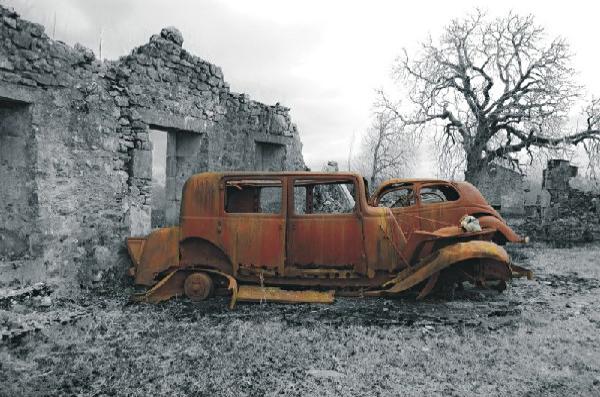
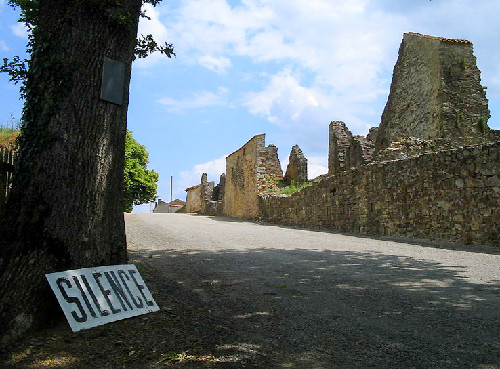
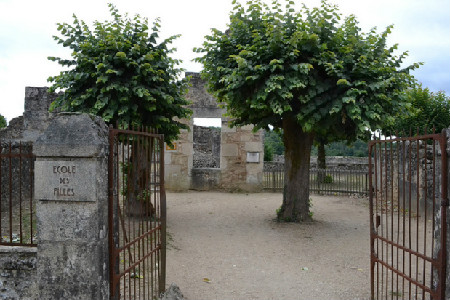
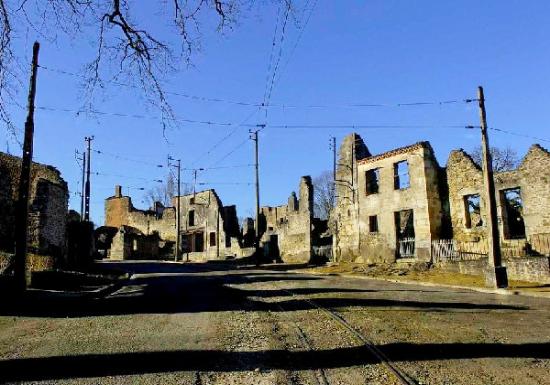
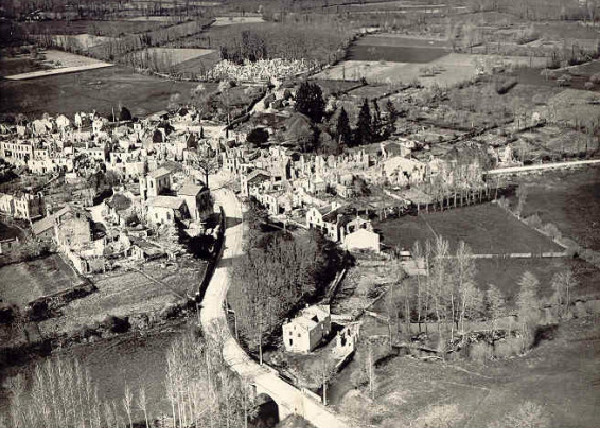
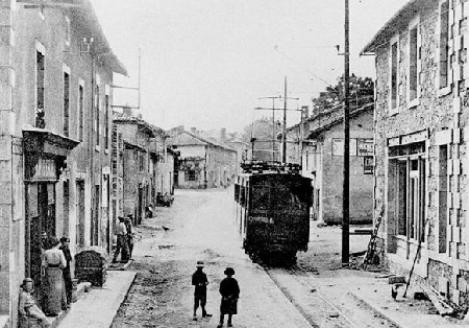
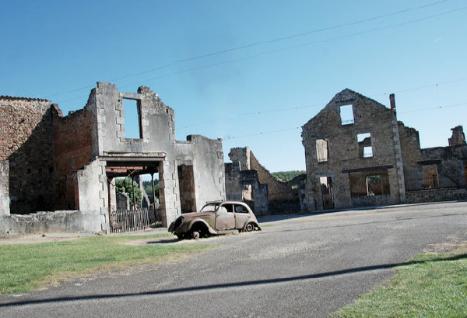
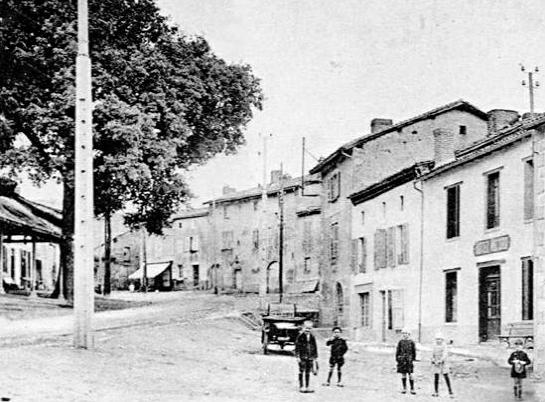
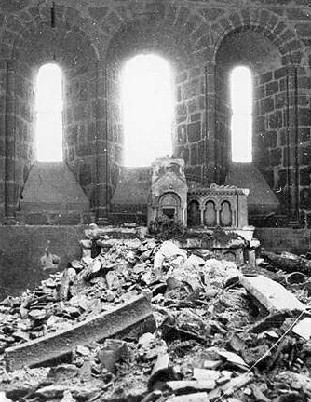

| 1940's cars rusting in the morning mist. |
| Above, a street scene from Oradour, ca. 1915; below, trolley tracks still wind through the abandoned town. |
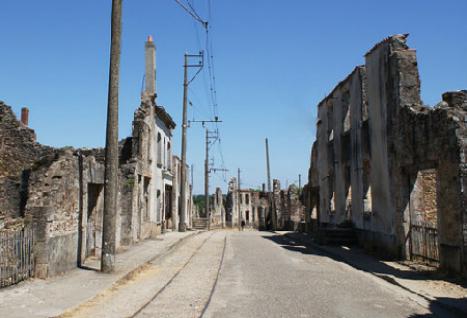
| The village doctor's car sits in front of his office, as though waiting for him to go on his daily rounds. |
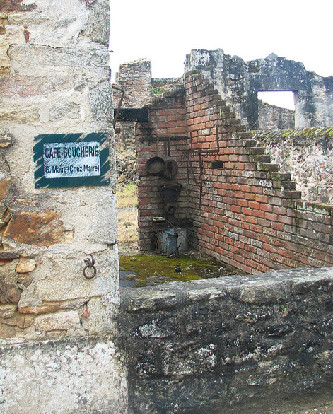
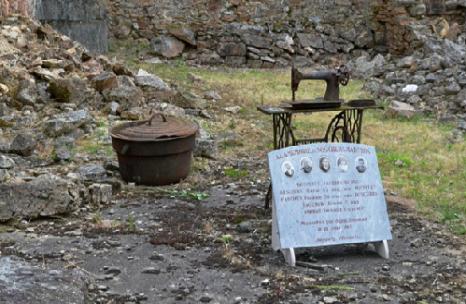
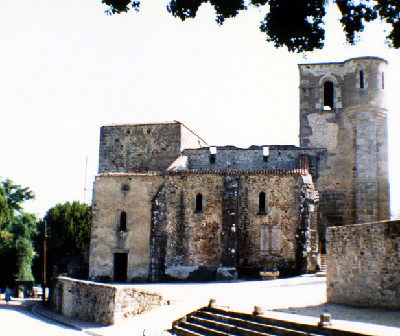
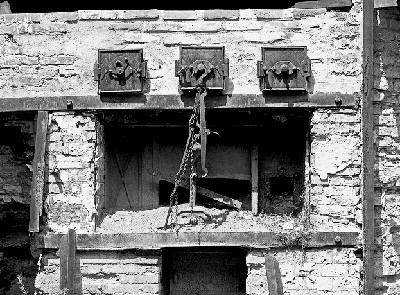
| The remains of the home of the Descubes family, memorial reads: "In memory of the dear martyrs, the Descubes family, Jacques, 65 - Marie, 67 - Eugenie, 30 - Renee, 5 - Fernand, 8. Massacred by the Germans, June 10, 1944." |
| Above and below, exterior and interior of church where the women and children of the village were burned to death. Exterior shot is a current photo, interior was taken just after the massacre. |
| Above, what remains of the girls' school; below, the Cafe Boucherie, with pans and utensils still hanging on the wall of the kitchen. |
| Street scenes of Oradour-sur-Glane; above, 1915; below, current. |
| The bakery, where the remains of two people were discovered, one of which was a baby who was found in the oven pictured in this photo. |
| Two women bring flowers to place on the burial sites of their family members in Oradour shortly after the massacre. |
| Aerial view of the village of Oradour, ca. 1940's. |
A village - and memorial - like no other, Oradour-sur-Glane, France stands silent, empty and frozen in
time. As it was on the evening of June 10, 1944, so it remains today. People may visit, but, in honor of the
642 villagers who were brutally massacred by a Nazi Waffen-SS Panzer Division company sixty-seven
years ago, no speaking is allowed in the village. The haunting shells of homes and businesses - many
shops with tools still in their places and pots still sitting on villagers' kitchen stoves, the rusting vintage
automobiles and the ancient cemetery with memorials to the victims all contribute to the surreal feelings the
village imposes on all who enter, but the eerie quiet is what seems to impress visitors most.
On June 10, 1944, four days after D-Day, Nazi soldiers mistakenly entered and sealed off
Oradour-sur-Glane in central France (having confused it with nearby Oradour-sur-Vayres) and ordered
everyone in the village to assemble in the village square, ostensibly, to have their identity papers
examined. All the women and children were then herded into the church, while the village was searched
and looted. Meanwhile, the men were led to barns and sheds, where machine gun nests had been put in
place. The order was given to begin shooting at them, aiming for their legs, presumably, so that they
would not die from the gun-shot wounds, but from the fire which was to follow. Once the victims were no
longer able to move, the Nazi soldiers coverd their bodies with fuel and set the barns on fire. Five men
escaped the slaughter. One hundred ninety men perished.
The soldiers then proceeded to the church where the women and children had been taken; they placed
incendiary devices inside the sanctuary, and locked the women and children inside. Those who tried to
escape through the windows, were mowed down with machine gun fire. A total of two hundred forty-seven
women and two hundred five children and infants died in the carnage. Only one woman escaped and
survived. Other than a few villagers who happened to be away that day and a handful who had fled upon
first seeing the Nazis enter town, only six people of the village of Oradour-sur-Glane were still alive by the
end of the day. Six hundred forty-two people had been murdered in a matter of a few hours.
Nazi officer Adolf Dickmann said that the carnage was in retaliation for activity of the French Resistance.
They suspected that Oradour-sur-Vayres was harboring members of the Resistance movement and,
tragically for the Oradour-sur-Glane villagers, they'd mistaken it for Oradour-sur-Vayres.
After the villagers were murdered, the Nazis burned and destroyed as much of the village as they could.
What was left remains today just as it was on the evening of June 10, 1944.
Gen. Charles de Gaulle decreed that the village would not be rebuilt on that spot, but would "remain a
memorial to the cruelty of the Nazi occupation." A new town was built nearby after the war. The original
village is known as the "Martyred Village." In 1999, Pres. Jacques Chirac dedicated a museum at the
location. It contains items recovered from the burned-out buildings, such as, watches stopped at the time
their owners were killed and other various personal and household items.
In later years, former SS officer Heinz Barth, who took part in the massacre, stated that his only regret
concerning Oradour was that there were survivors.
This page is dedicated to the memory of the villagers of Oradour-sur-Glane. -- Nancy
time. As it was on the evening of June 10, 1944, so it remains today. People may visit, but, in honor of the
642 villagers who were brutally massacred by a Nazi Waffen-SS Panzer Division company sixty-seven
years ago, no speaking is allowed in the village. The haunting shells of homes and businesses - many
shops with tools still in their places and pots still sitting on villagers' kitchen stoves, the rusting vintage
automobiles and the ancient cemetery with memorials to the victims all contribute to the surreal feelings the
village imposes on all who enter, but the eerie quiet is what seems to impress visitors most.
On June 10, 1944, four days after D-Day, Nazi soldiers mistakenly entered and sealed off
Oradour-sur-Glane in central France (having confused it with nearby Oradour-sur-Vayres) and ordered
everyone in the village to assemble in the village square, ostensibly, to have their identity papers
examined. All the women and children were then herded into the church, while the village was searched
and looted. Meanwhile, the men were led to barns and sheds, where machine gun nests had been put in
place. The order was given to begin shooting at them, aiming for their legs, presumably, so that they
would not die from the gun-shot wounds, but from the fire which was to follow. Once the victims were no
longer able to move, the Nazi soldiers coverd their bodies with fuel and set the barns on fire. Five men
escaped the slaughter. One hundred ninety men perished.
The soldiers then proceeded to the church where the women and children had been taken; they placed
incendiary devices inside the sanctuary, and locked the women and children inside. Those who tried to
escape through the windows, were mowed down with machine gun fire. A total of two hundred forty-seven
women and two hundred five children and infants died in the carnage. Only one woman escaped and
survived. Other than a few villagers who happened to be away that day and a handful who had fled upon
first seeing the Nazis enter town, only six people of the village of Oradour-sur-Glane were still alive by the
end of the day. Six hundred forty-two people had been murdered in a matter of a few hours.
Nazi officer Adolf Dickmann said that the carnage was in retaliation for activity of the French Resistance.
They suspected that Oradour-sur-Vayres was harboring members of the Resistance movement and,
tragically for the Oradour-sur-Glane villagers, they'd mistaken it for Oradour-sur-Vayres.
After the villagers were murdered, the Nazis burned and destroyed as much of the village as they could.
What was left remains today just as it was on the evening of June 10, 1944.
Gen. Charles de Gaulle decreed that the village would not be rebuilt on that spot, but would "remain a
memorial to the cruelty of the Nazi occupation." A new town was built nearby after the war. The original
village is known as the "Martyred Village." In 1999, Pres. Jacques Chirac dedicated a museum at the
location. It contains items recovered from the burned-out buildings, such as, watches stopped at the time
their owners were killed and other various personal and household items.
In later years, former SS officer Heinz Barth, who took part in the massacre, stated that his only regret
concerning Oradour was that there were survivors.
This page is dedicated to the memory of the villagers of Oradour-sur-Glane. -- Nancy